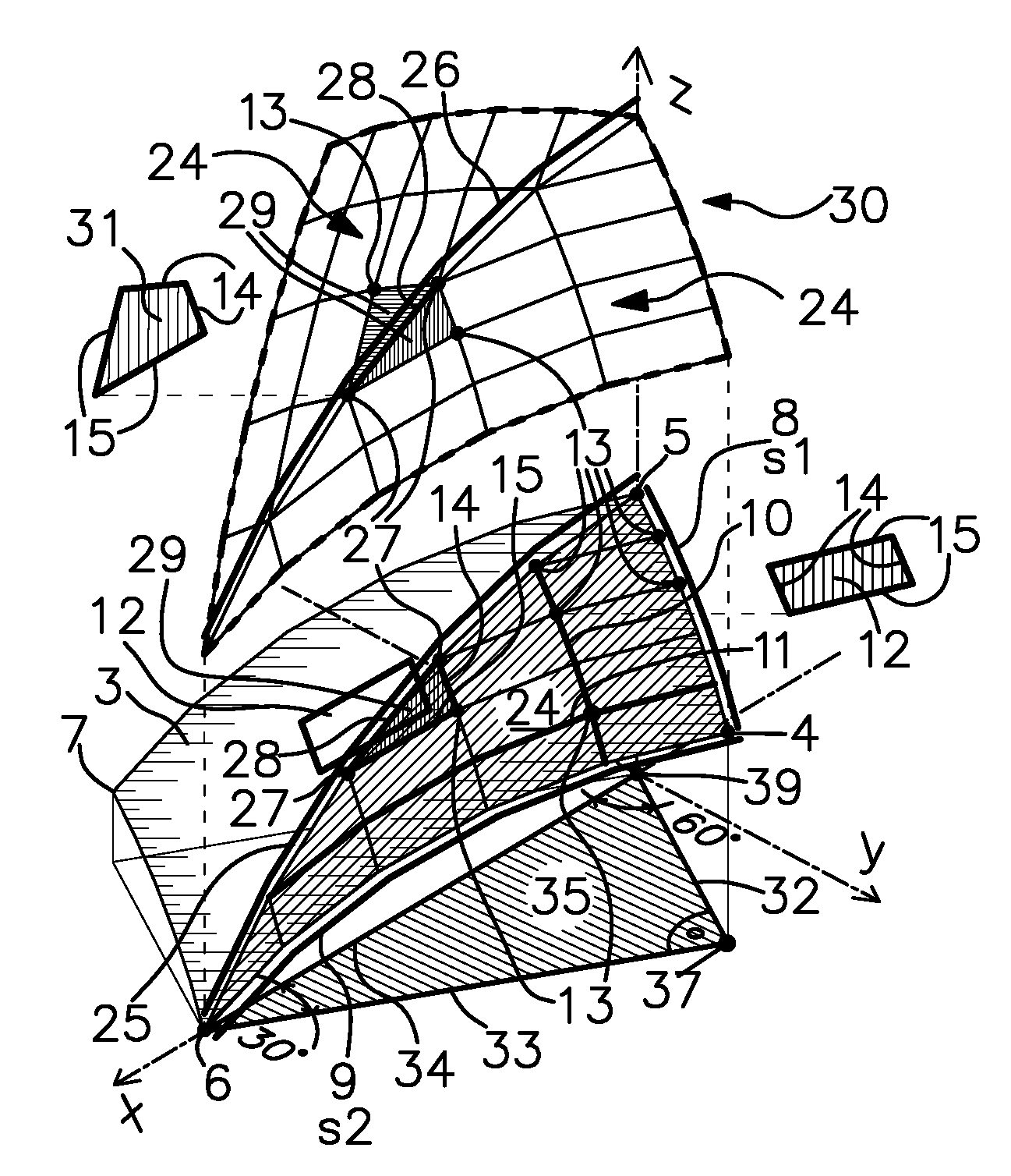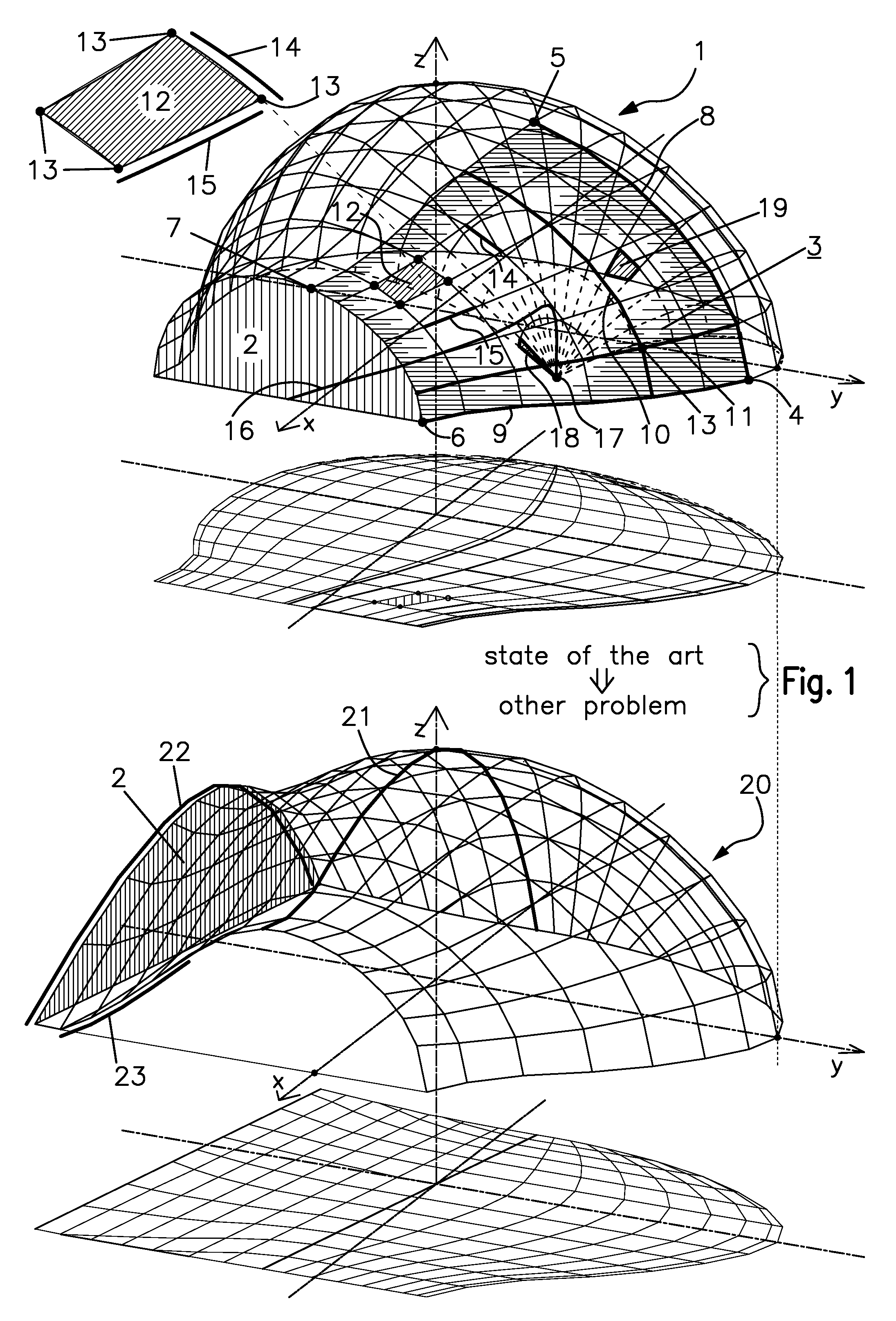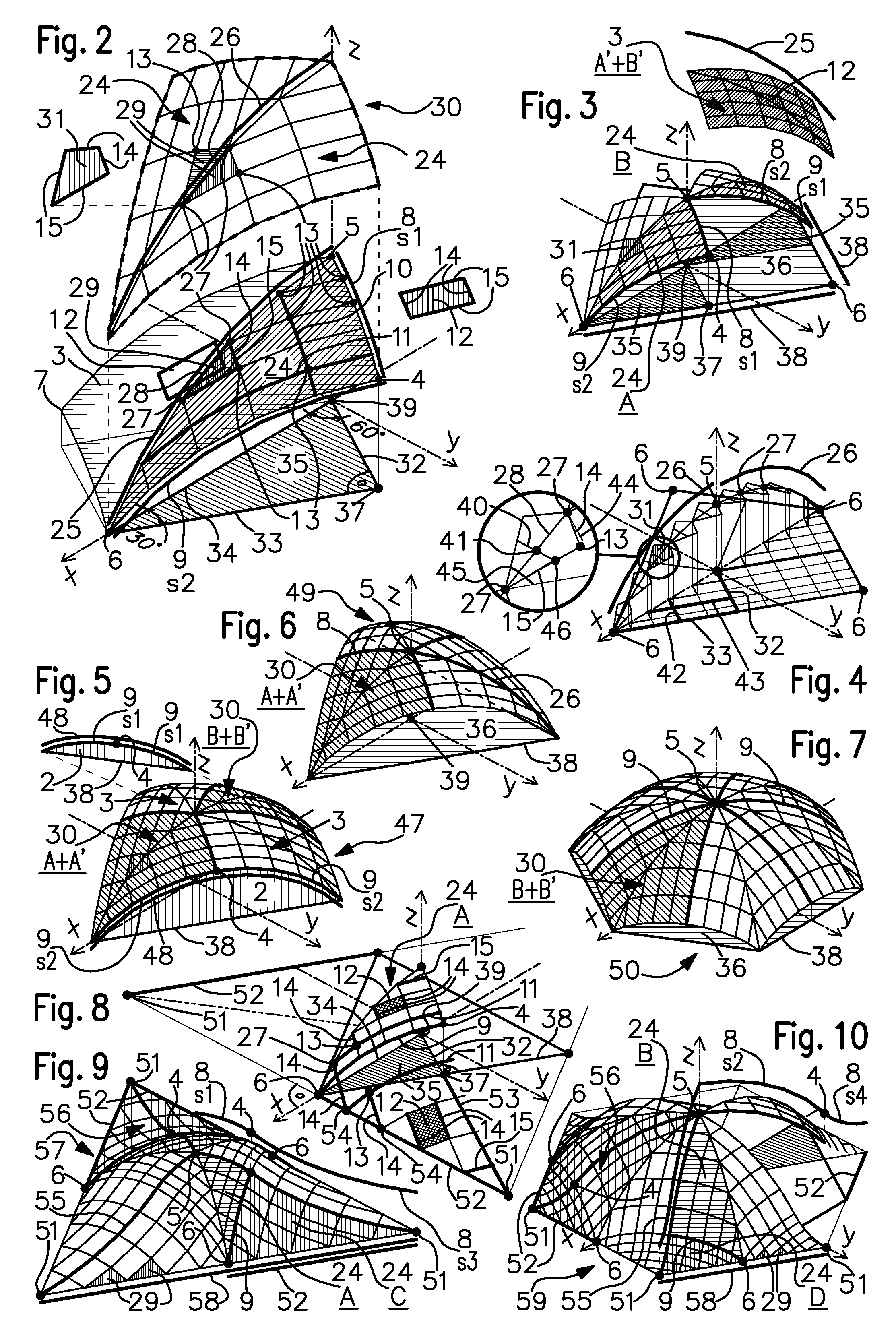Double-curved shell
a shell and double-curved technology, applied in the direction of arched structures, building roofs, building components, etc., can solve the problems of not-plane meshes, large relative to the surface of the envelope, and large cutting was
- Summary
- Abstract
- Description
- Claims
- Application Information
AI Technical Summary
Benefits of technology
Problems solved by technology
Method used
Image
Examples
Embodiment Construction
[0214]An aspect of the invention includes the interconnection of spatial triangles, which already were called sherds, having a TST-subdivision into meshes. In FIG. 2, such sherds 24 are shown.
[0215]In FIG. 2 (bottom), there is, like in the curved surface of the shell 1 according to the state of the art in FIG. 1 (top), an ordinary quad section 3, which is hatched on the four sides. But this time, it is the section of only a simple translational surface, which besides is not mixed-curved but purely synclastic. Nevertheless here, this ordinary quad section between the corner points 4, 5, 6, 7 is formed of a net of two array curves 10, 11 crossing each other in node points 13. The ordinary quad section is composed of quad-meshes 12 of equal number in the longitudinal and the transversal direction and being located between four coplanar node points 13. On two sides, it is bounded by array sides 8, 9, offset in the drawing. At the same time, the array side 8 ending on the uppermost corne...
PUM
 Login to View More
Login to View More Abstract
Description
Claims
Application Information
 Login to View More
Login to View More - R&D
- Intellectual Property
- Life Sciences
- Materials
- Tech Scout
- Unparalleled Data Quality
- Higher Quality Content
- 60% Fewer Hallucinations
Browse by: Latest US Patents, China's latest patents, Technical Efficacy Thesaurus, Application Domain, Technology Topic, Popular Technical Reports.
© 2025 PatSnap. All rights reserved.Legal|Privacy policy|Modern Slavery Act Transparency Statement|Sitemap|About US| Contact US: help@patsnap.com



